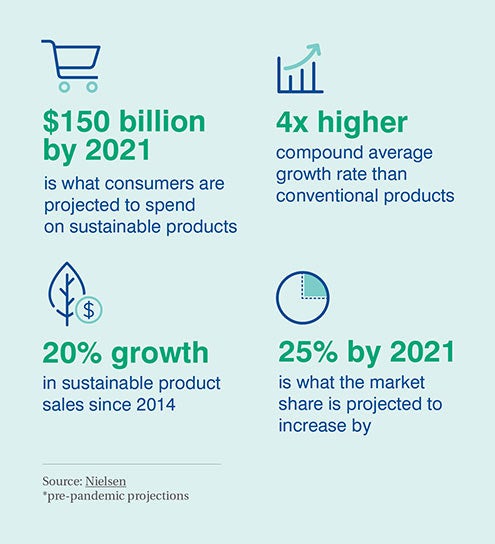The roadmap to sustainable e-commerce

How people shop is changing. The growth of e-commerce has been explosive, with millions of products channeled through e-commerce platforms every day – a trend that is projected to increase as more people move online for their everyday shopping needs.
As shopping preferences become increasingly omni-channel, e-commerce retailers have the responsibility, influence and opportunity to make everyday products safer and more sustainable. Because the science is clear: our planet simply cannot sustain our rate of consumption.
A roadmap to sustainable e-commerce guides the retail industry to a future that’s better for business and the environment.
The business case for sustainable e-commerce

1. Capture a growing market. Research shows that younger shoppers want to buy from brands and companies that are transparent and committed to making a positive social impact. Attracting and engaging this “conscious consumer” will build brand loyalty and improve the bottom line
2. Manage the risk of product liability. While suppliers are foremost responsible for their own products, the retailer has a shared responsibility for making sure its third party products are as safe as possible or face potential financial and reputational risk.
3. Future-proof operations. Taking into consideration environmental disruptions across business operations and those of suppliers is critical for ensuring resilient, nimble supply chains.
4. Maintain shareholder confidence. Investors are demanding safer products and more transparency, and companies are being judged on whether they can demonstrate strategic, aggressive, and transparent actions.
What leadership looks like for e-commerce retailers

Sustainability leadership means going beyond your direct operations to engage product supply chains and embracing strategic partnerships to drive scale. Here is how retailers can raise the bar:
- Make sustainability a priority across all retail operations, including in-store, online and third-party marketplaces
- Understand their responsibility—and influence—in advancing sustainable practices in their supply chains.
- Invest in initiatives that accelerate the development of safer and more sustainable products
- Cultivate the conscious consumer, who seeks out and purchases sustainable products, through education, marketing and incentives
- Recognize that corporate engagement on smart environmental policy — at local, state and national levels—is critical to advancing corporate sustainability goals.
But what does that look like in practice?
The seven steps to e-commerce sustainability leadership
1. Assess your chemical and carbon footprints
2. Set ambitious goals to address your footprints
3. Align business operation to your sustainability goals
4. Engage product suppliers and sellers to meet your goals
5. Help consumers make sustainable choices
6. Measure your progress and share it publicly
7. Lead your industry forward on sustainability
The ultimate result: A safer, more sustainable e-commerce marketplace.
